Search Results
Follow-Up Care
Follow-up medical care is important for every Hodgkin lymphoma patient. Follow-up care helps the doctor monitor you to see if disease has recurred or relapsed, or to see if more treatment is needed. Talk to your doctor about how often to have follow-up visits and what laboratory tests, scans, or other imaging you need. It is important to get a record of your cancer treatment including the drugs you received so that your doctor can follow up on specific long-term effects that may be associated with your treatment.
Lymph Node Biopsy
A lymph node biopsy detects cancer cells in lymph nodes and confirms a lymphoma diagnosis. Surgery is used to obtain all or part of a lymph node (or sometimes another tumor site) because it gives the pathologist or hematopathologist more tissue to examine. The tissue examination may detect cancerous tumors, noncancerous masses or infection. Since treatment differs for various types of blood cancers, a precise diagnosis is needed. A second opinion from a pathologist or hematopathologist may be needed to make the correct diagnosis.
How Is It Done?
Resources for Survivors
Survivorship WorkbookUse this Survivorship Workbook to collect all the important information you need throughout diagnosis, treatment, follow-up care and long-term management of a blood cancer.
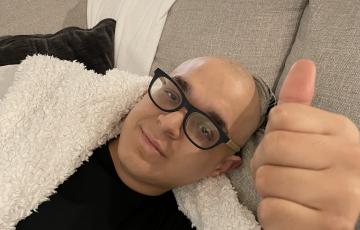
Joshua
My name is Joshua. I was born and raised in South Florida and moved to Oregon after high school 8 years ago. I can’t say that I had a difficult childhood growing up just difficult circumstances that were challenges to overcome. I am what most people would consider an introverted type of personality, and while I was raised in a home with very caring parents and sisters, I’ve just always found it difficult to fit in, especially once I got to high school. I’m tall, at almost 6 feet, and very smart, always in advanced placement classes.
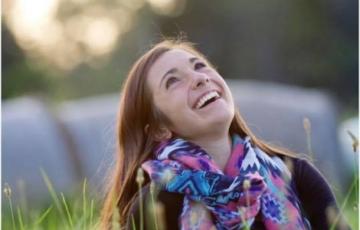
Sonny
The last conversation I had with my daughter Sonny was one that I will never forget. As she sat there exhausted from the leukemia and CDiff and sepsis that was ravaging her body; we talked about how much of a fight she put up. She could only respond with a short, “I know Momma”. To which I replied, “You don’t have to fight anymore baby.” Again, “I know Momma”. I told her that her Poppa was waiting in Heaven on his tractor to take her for a ride like she used to love when she was little.
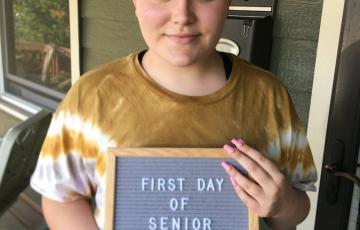
Madeleine
We were lucky. It seems strange to frame it that way, but it's true.
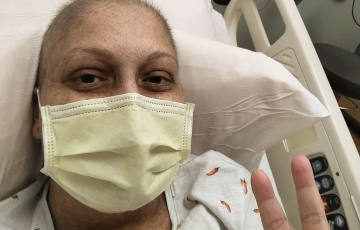
Sara
In May 2019, I was surprised and delighted to find out that I was pregnant. Throughout the summer, I eagerly delved into extensive reading and research on pregnancy and the first-time mom experience. However, this period also brought about a challenging early pregnancy. I found myself short of breath after even short walks, relied on numerous naps, and surprisingly didn't experience intense pregnancy cravings. In fact, I wasn't gaining much weight.
Signs and Symptoms
Signs and symptoms are changes in the body that may indicate the presence of disease. A sign is a change that the doctor sees during an exam or in a laboratory test result. A symptom is a change that a patient can see and/or feel.
It is common for a child with ALL to feel a loss of well-being because of the lack of normal, healthy blood cells.
Symptoms of a low red blood cell count (anemia) include:

Amy
It was July 2014, I got up and went for a quick morning jog before work. It’s Iowa, it was hot and humid, but I was unusually winded after that jog. I figured it was due to being humid outside and finished getting ready to go to work (I was a registered nurse at a physician’s clinic doing triage). During the day, I continued to feel a little winded and noticed I had a cramp in my calf. The nurse in me said to ignore it, that I was overreacting, but I decided to call my physician. She directed me to my local ER for fear of a blood clot.
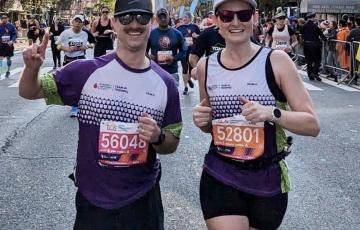
Courtney
In March 2022, I began experiencing unusual symptoms of fatigue, nausea, persistent infections, and bloody noses and gums, but I didn’t think much of it. Following a lucky-timed appointment with my primary care doctor and multiple blood tests, I was diagnosed with acute lymphoblastic leukemia (ALL). Cancer isn’t something an otherwise “healthy” 27-year-old thinks will come out of a doctor’s mouth.
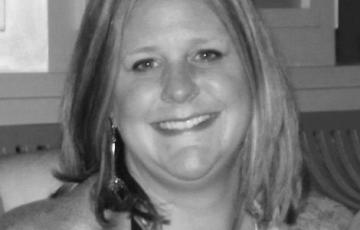
Kristen
In the fall of 2012, Kristen Comer noticed her energy level wasn't as high as it had been, but she thought nothing of it. It wasn’t until the fall of 2013 when she had unidentifiable bruises on her body and no change in her energy levels, that her general practitioner drew labs to determine a diagnosis. After three panels of blood work, Kristen was diagnosed with chronic myeloid leukemia (CML) on December 31, 2013.

Lisa
As a new graduate with a master’s degree in psychology, I, among many others, am applying to jobs out in the 'real world.' Recently, one of the job applications asked me to describe myself in three words. My answer consisted of adjectives such as determined, capable and diligent. The one word that best describes me though is one I did not say, and that is survivor.
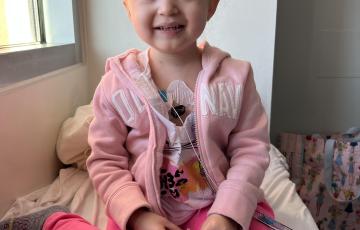
Vera
Vera was diagnosed on July 23, 2022. Her symptoms started as typical flu-like, lethargic, loss of appetite, and a fever. After three days of a fever and no one in the house showing symptoms, we took her to the pediatrician and were told she likely had a virus and to return in a week or so if symptoms didn’t subside. Over the next three days, her symptoms worsened (pale skin, a fever of 101 with Tylenol, bruises, and no appetite), and we took her to a medical professional every day, including the ER.
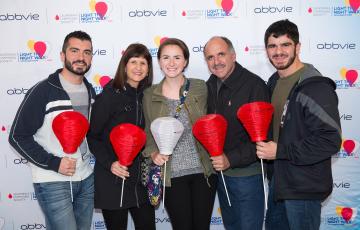
Gianna
My story began nearly seven years ago on February 28 when I received the call from my doctor and heard those dreaded words, “You have cancer.” A week prior, I had gotten a lymph node biopsy for a lump that randomly grew on my neck. As a healthy 19-year-old, cancer was the furthest thing from my mind, and receiving a diagnosis of Hodgkin lymphoma (HL) was simply unbelievable to me and my family. Hearing this news began a three-week blur of diagnostic testing and meetings with oncologists, fertility specialists, and surgeons before my first chemotherapy treatment on March 23, 2015.

Trisha
In November 2019, Trisha and her husband were thrilled to have given birth to her second daughter. At this time, she went to visit her OBGYN for her 6-Week Postpartum Exam, and to her surprise, her doctor noticed she had an enlarged spleen and liver. She was immediately instructed to go to the emergency room, where she was admitted for one week. After a bone marrow biopsy, Trisha was diagnosed with plasma cell leukemia (PCL). Three days later, I went to another follow-up with my oncologist.

Lorna
I was diagnosed with Stage 4 NH large B-Cell primary hepatic lymphoma in April, 2013. I was told by my doctor that this was a very rare form of lymphoma with less than 200 cases in the US. I had surgery to remove 90% of the right lobe of my liver as the tumor was very large at 16cm (initially I was diagnosed with liver cancer until they removed the tumor and the pathology revealed that it was NH lymphoma).
Chemotherapy and Drug Therapy
Chemotherapy is the mainstay of treatment for HL. A combination chemotherapy regimen consists of two or more chemotherapy drugs. Generally, the drugs are dissolved in fluid and usually administered via a peripheral intravenous (IV) line. If finding an accessible vein is problematic, a central line (a port, or a peripherally inserted central venous catheter (a PICC or PIC line) may be used for some HL patients.
Clinical Trials
Taking part in a clinical trial may be the best treatment choice for some acute lymphoblastic leukemia (ALL) patients. Clinical trials are under way for patients at every treatment stage and for patients in remission. Today's standard treatments for cancer are based on earlier clinical trials. The Leukemia & Lymphoma Society continues to invest funds in ALL research.
Click here to read more about clinical trials.
Clinical Trials
When it comes to finding the right treatment for your child's cancer, a clinical trial may be an option. Your child will have access to new or improved therapies under study and not yet on the market. Discuss with your child's doctor the possibility of participating in a clinical trial, where treatment is administered in a safe, closely monitored environment.
Click here to read more about clinical trials.
Side Effects
Cancer therapy for hairy cell leukemia can sometimes produce side effects. For most patients, treatment side effects are temporary and go away once therapy ends. For other patients, side effects can be more severe, sometimes requiring hospitalization.
Before you undergo treatment, talk with your doctor about potential side effects. Drugs and other therapies can prevent or manage many side effects.

Todd
This cause is dear to me because my grandmother, Anne Zavorskas, passed away several years ago from Hodgkin’s disease--a form of leukemia. Also, many years ago, my mentor’s son, Ryan Hurley, had a recurrence of leukemia, which he was first diagnosed with at the age of three. He died at the age of 19. Unfortunately, leukemia at the time caused more deaths than any other cancer in children under the age of 20. These instances led me to my desire to donate time and money to this particular charity. I have volunteered my time and fundraising expertise ever since.
Stem Cell Transplantation
For some patients who are in remission and can tolerate intensive chemotherapy, the doctor may recommend stem cell transplantation during the consolidation phase of chemotherapy.
Diagnosis
Diagnosing juvenile myelomonocytic leukemia (JMML) usually involves ruling out other similar diseases such as chronic myelomonocytic leukemia and chronic myeloid leukemia, especially if your child is older than 6 years. Doctors commonly use blood tests and bone marrow tests to diagnose JMML.
The tests used to diagnose JMML include:
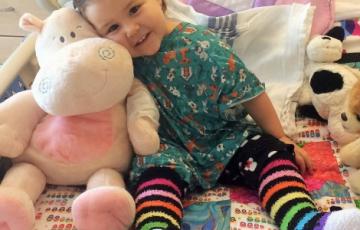
Lyra
Lyra is a confident three year old who spreads joy wherever she goes! She loves to sing, dance, draw, snuggle while reading stories and is rarely seen in anything but a princess dress. If you happen to pass Lyra at the store, she will most certainly ask you your name and probably tell you all about her favorite my little pony or what she ate for breakfast.
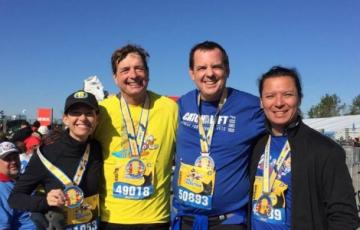
Douglas
My story begins almost 24 years ago in 1996, when I was diagnosed with cancer, chronic lymphocytic leukemia (CLL). Back then, there was no cure for CLL except for a bone marrow transplant (BMT), but that procedure only had a survival rate of 50%, not very attractive odds. My prognosis was I had anywhere from six to 15 years without a BMT.